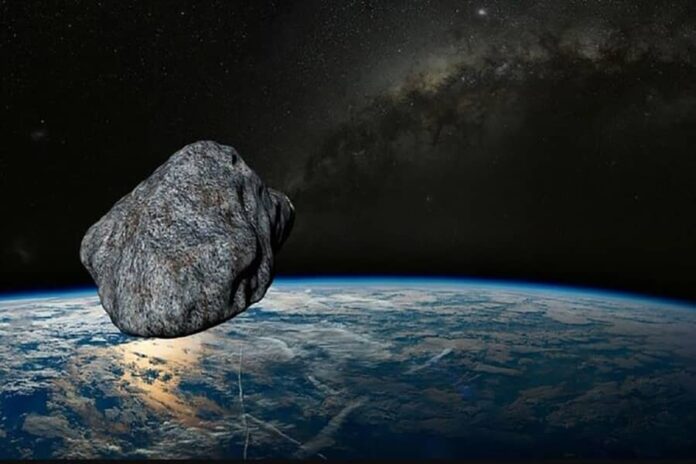In 2029, when the asteroid Apophis, often called the ‘God of chaos,’ approaches Earth closely, our planet’s gravitational pull may induce tremors and landslides that could significantly alter its surface. A recent study suggests that during this near encounter, Apophis may transform due to these geological activities.
Named after Apep, the ancient Egyptian deity associated with chaos, Apophis measures about 1,100 feet (340 meters) in length and has a peanut-like shape. While a collision with an asteroid of this size would not obliterate Earth, it poses the potential to devastate a city. Discovered in 2004, astronomers initially predicted a very close approach of Apophis to our planet in 2029.
However, enhanced observations conducted in 2021 provided more precise data about its trajectory and indicated a lower likelihood of impact than previously thought. It is expected that on April 13, 2029, Apophis will come within approximately 20,000 miles (32,000 kilometers) of Earth—closer than some satellites orbiting our planet.
Given this distance, significant effects on Earth are unlikely during its passage. Nonetheless, scientists are curious about how Apophis itself will be affected by this close encounter. Ronald-Louis Ballouz from Johns Hopkins University Applied Physics Laboratory expressed interest in this question. He noted that tiny meteoroids constantly bombard asteroids through a process called space weathering; however, those asteroids that pass near planets like Earth typically show less evidence of weathering on their surfaces.
The precise mechanisms responsible for removing these weathered features remain unclear. One theory suggests that gravitational forces from nearby planets might dislodge rocks from an asteroid’s surface and expose fresh material underneath. To investigate this idea further, Ballouz and an international team developed computational models for Apophis since limited physical characteristics are known about it; they based their simulations on Itokawa—a two-lobed asteroid studied extensively before—tracking various physical changes as they modeled its approach toward Earth.
Researchers have found that two physical phenomena, influenced by Earth’s gravitational pull, are expected to reshape the surface of Apophis during its close approach in 2029. The first phenomenon involves tremors that are likely to start approximately an hour before Apophis reaches its nearest point to Earth and will persist for a brief period afterward. Although estimating the intensity of these tremors is challenging, Ballouz noted that Apophis’ gravity is roughly 250,000 times weaker than that of Earth.
He suggested that even minor seismic events could effectively disturb its surface. This implies that the quakes might be powerful enough to dislodge boulders from Apophis’ exterior. While some of these rocks may drift away, most are expected to return and create unique surface features detectable by a spacecraft passing by.
The second process capable of rejuvenating Apophis’ surface involves changes in its tumbling motion. This occurs because the asteroid does not rotate uniformly on a fixed axis or time frame; instead, it tumbles through space akin to an erratically thrown football. A separate study conducted in 2023 indicated that Earth’s gravity would influence the asteroid’s rotation speed based on its orientation during the 2029 flyby. New simulations have corroborated this observation and demonstrated that alterations in Apophis’ tumbling could lead to instability in the sloped surfaces of rocks, which might result in landslides under certain conditions.
Unlike the immediate effects of seismic activity, these rotational changes will unfold gradually over tens of thousands of years. The findings not only forecast how Apophis will behave following its encounter in 2029 but also propose a new mechanism for refreshing asteroid surfaces—potentially addressing a long-standing question about how close planetary encounters can alter small celestial bodies’ surfaces, according to Ballouz.

